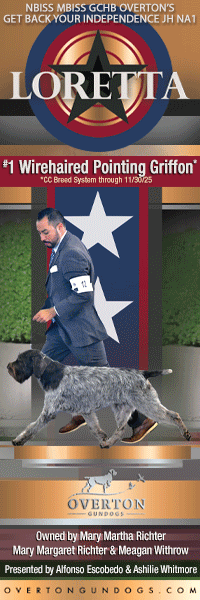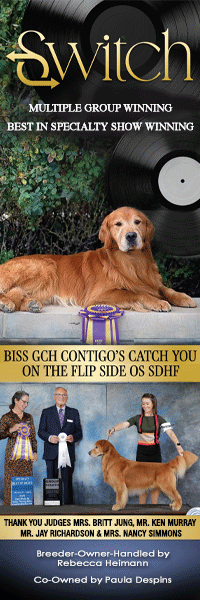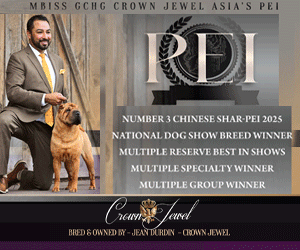AKC and Big Government – A Mirror Image?

By Amy Fernandez
For dog history lovers, old magazines are in inexhaustible treasure trove. Along with arcane facts about famous breeders and top winners they offer a vivid portrayal of the prevailing trends and priorities of past eras. More often than not, it’s a startling contrast to modern attitudes on so many issues.
Today, AKC is focused on expanding its consumer base and staking claims on new areas of the dog world. Back in 1950, the major concerns stemmed from the unprecedented growth of America’s dog game after WWII.
Without warning longstanding procedures suddenly started coming apart at the seams. AKC had rules, but, by today’s standards, they were insanely informal. For instance, pedigrees were routinely accepted without official documentation. Judges approval basically required an OK from three or four luminaries connected with that particular breed. AKC began tightening up procedures in the ‘20s. They drafted formal registration criteria and implemented judges licensing, but there was plenty of flexibility. When problems arose, they were handled privately.
In reality, it was more like a private club. But it worked fine when AKC governed 30-40 shows that generally drew 400-500 entries. Practically every judging panel featured the same roster acknowledged experts like James Mortimer, Charles Hopton, Enno Meyer, Harry Lacy, and James Watson. They were familiar with most exhibitors, who were invariably dedicated to presenting the best in that particular breed. It was a small world, and everybody was on the same page.

Then the status quo literally changed overnight.
In the ‘50s pages of the Gazette became filled with debates on AKC’s future. Post WWII prosperity lured legions of new fanciers from varying backgrounds, armed with radically new ideas and plans to remake America’s dog game. We still enjoy their formidable contributions. Of course, that wasn’t so apparent back then. This transition brought new challenges, but overall, it was a very optimistic time.
AKC perceived itself as a successful startup ready for the big time. Naturally, they envisioned their role as corporate management; their objective was to implement definitive rules to guide this growth and prosperity.
Here’s a great example. In 1950 breeder/author Kyle Onstott wrote a lengthy three part editorial on AKC’s plan to revamp the breed standards, Are The Standards At Fault? “It is a large order, and one that AKC will not undertake to fill without grave deliberation and without a conviction of the great need that it take action.”
Onstott was all for it, “There are numerous, definite benefits to be gained from having the standards compiled by AKC. The first, and most patent, is that they would presumably be lucid, literate, and definitive. Moreover, they would be schematically uniform; …a tail would be a tail, not a stern in one, a flag in another”. He was certain this would finally resolve the myriad of problems associated with inept judging. As his article progresses, Onstott expands on his vision of AKC owned and controlled standards, recommending across the board revisions every five years, “Judges would know when to expect changes, not one this year, one next, and no change at all in this one despite the recognition that the breed no longer conforms to it.”
He maps out logical plans to produce definitive breeder guidelines and illustrations for every breed. “Megargee is the only living draughtsman of dogs who comes to my mind who is able to put skeletons in his drawings to hold the animals together …has a sound concept of types of the various breeds, and is here suggested as the ideal artist for the job.” He adds that it’s high time for AKC to establish clear judging polices for incendiary issues like artificially enhanced exhibits, shy or vicious dogs, missing testicles, and suspected health problems.
Reading his sincere, enthusiastic vision of an orderly AKC universe, my first reaction was “Kyle you are so naïve.” I’m sure he had no suspicion of the beatdowns and lawsuits that often accompany standard revisions today – or any AKC rule changes for that matter. By Part Three, Onstott is sailing along on his dream of AKC nirvana, closing with a reasonable request that seemed well within reach at that moment. “I want better judging – by myself as well as other judges.” AKC did implement polices regarding issues like disappearing testicles. But Onstott’s big hope remains equally elusive today.

As it turned out, AKC’s corporate management strategy was doomed to fail. America’s dog world could not be forced into a logical, consistent framework because as it got bigger, it also got way more complicated and unpredictable. AKC found itself managing a constituency of dog lovers with vastly divergent interests, motives, agendas, and abilities.
AKC may consider itself corporate management. But as they try to maintain order, keep the ship on course, and try to make everybody happy, their approach looks a lot more like big government.
Short URL: http://caninechronicle.com/?p=20871
Comments are closed











